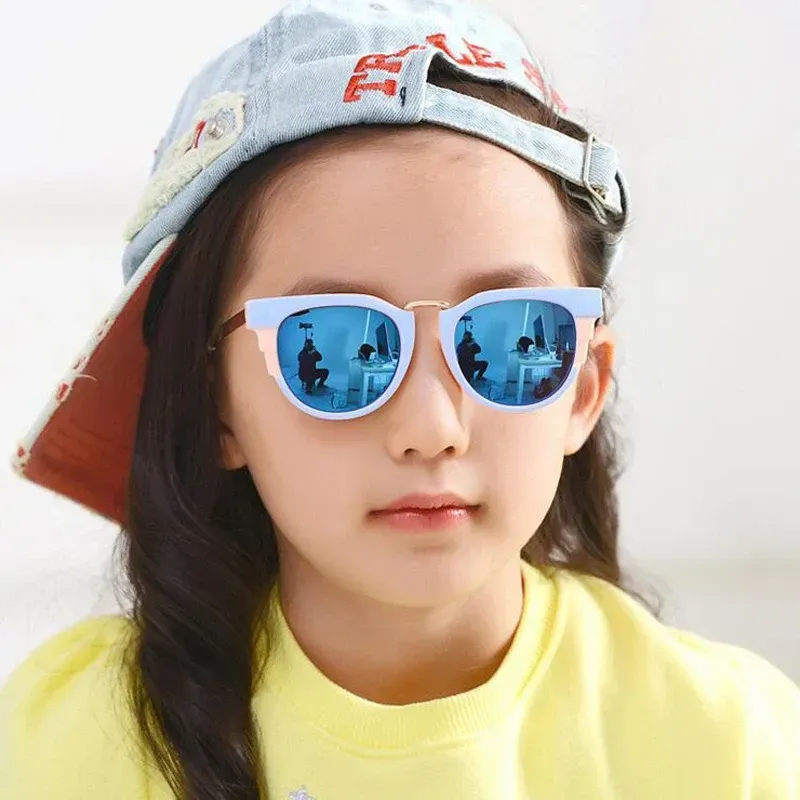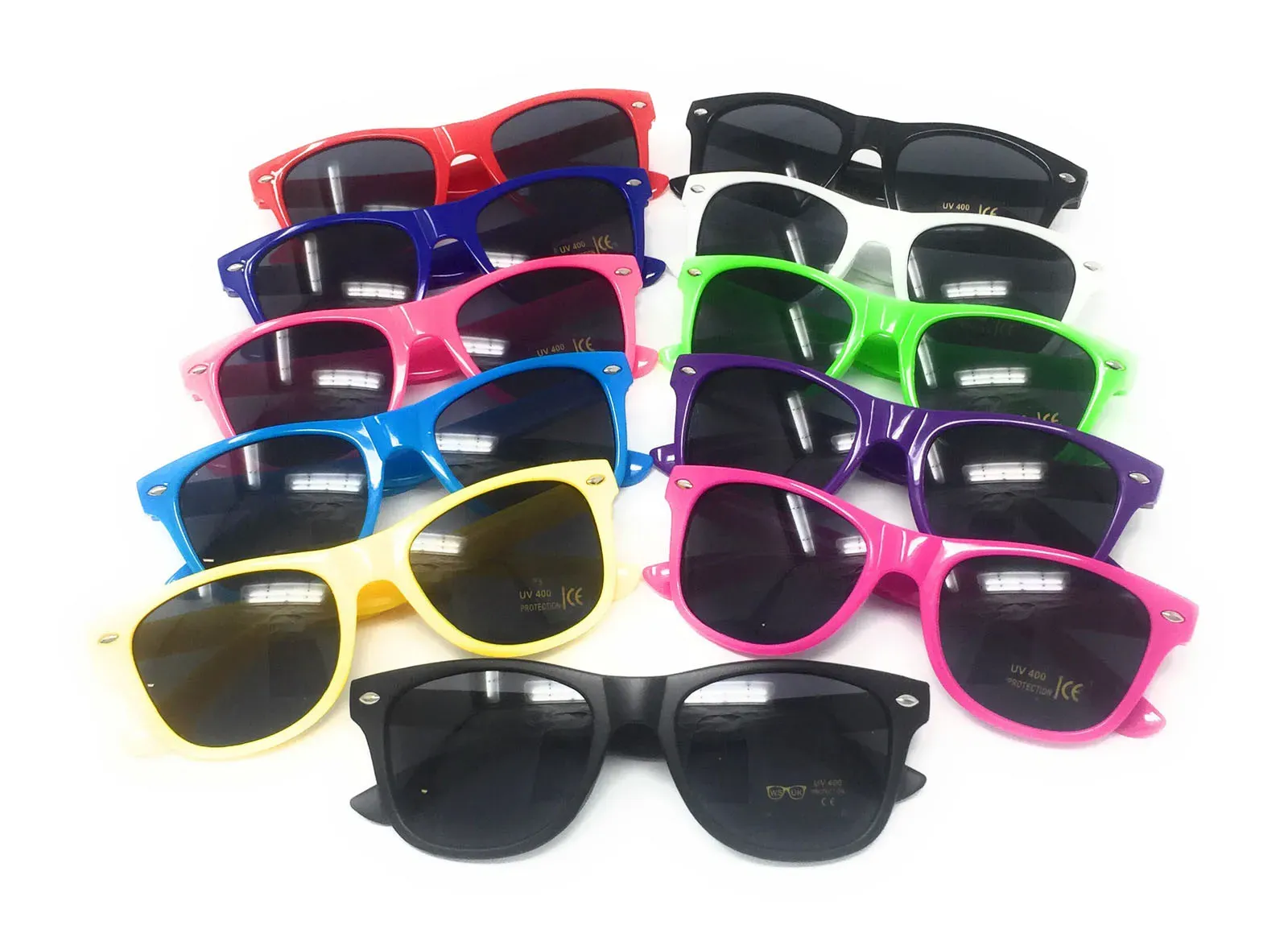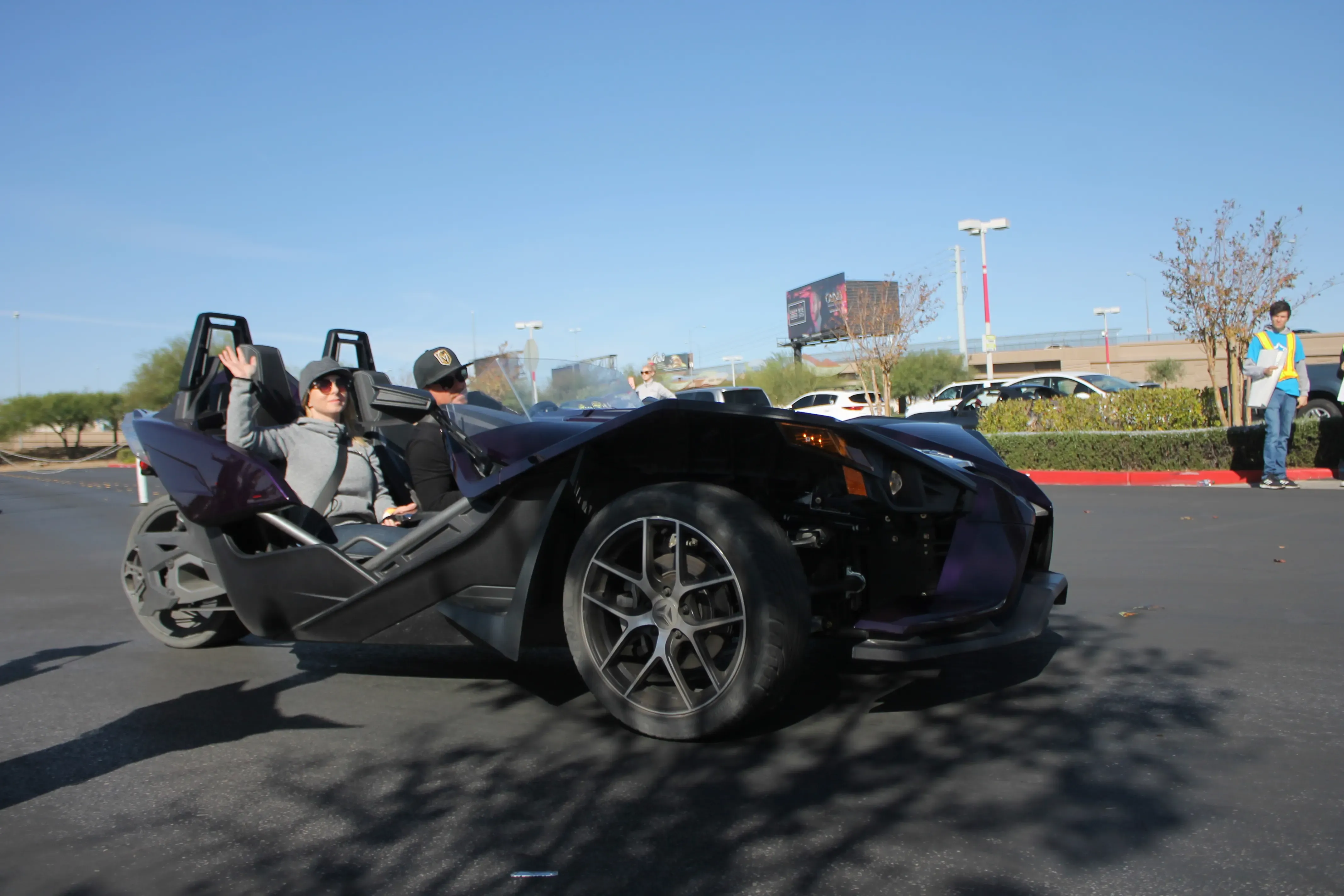Table of Contents
The sun feels good, doesn't it? Warm on your skin, perfect for playing outside. But just like you protect their skin with sunscreen, their eyes need shielding too. Those bright rays contain ultraviolet (UV) radiation, and young eyes are particularly vulnerable. Their pupils are larger, and the lens inside is clearer than an adult's, letting more harmful light reach the retina. This isn't just about making them stop squinting in bright light; long-term exposure to UV rays can increase the risk of serious eye conditions down the road. Think cataracts or macular degeneration later in life. That's why investing in proper kids sunglasses isn't optional; it's essential eye health care. Finding the right pair of kids sunglasses can feel overwhelming, with so many options claiming protection. You need more than just dark lenses; you need certified UV protection, durable frames that can survive being stepped on or dropped, and a fit that stays put without being uncomfortable. This guide will walk you through the critical factors in selecting effective and practical kids sunglasses, ensuring your child's vision is safeguarded while they explore the world.
Why Kids Need Sunglasses: Protecting Young Eyes
Why Kids Need Sunglasses: Protecting Young Eyes
More Than Just Squinting
let's talk about those tiny humans and their eyes. You know how you feel when you step outside on a super bright day and forget your shades? That immediate squint, the discomfort? Kids feel that too, but their eyes are even more sensitive. We're not just talking about comfort here; we're talking about actual, long-term damage. Their eyes are still developing, and the structures inside, like the lens, are much clearer than ours. This means more of that harmful ultraviolet (UV) radiation from the sun gets through to the back of the eye, to the retina. Think of it like having a less effective filter.
This isn't some far-off, maybe-it-will-happen scenario. Damage from UV exposure is cumulative. Every time they're out in the sun without protection, those rays are doing a little bit of work, adding up over time. It's like getting tiny sunburns on their eyeballs. Sounds awful, right? Because it kind of is. Protecting their eyes now is about preventing serious issues decades down the line. We're talking about reducing the risk of things you really don't want your kid to deal with later in life.
The Long-Term Risks Are Real
So, what are these risks we're trying to avoid? The big ones are conditions like cataracts and macular degeneration. Cataracts are when the lens in your eye gets cloudy, making it hard to see. While they often happen with age, significant UV exposure, especially from a young age, can speed up their development. Macular degeneration affects the part of the retina responsible for sharp, central vision – the kind you need for reading or recognizing faces. UV damage is a known risk factor here too.
It's not just those major diseases either. UV exposure can also contribute to pterygium, a growth on the white part of the eye that can eventually block vision, and photokeratitis, which is basically a sunburn of the cornea – incredibly painful and something you definitely want to avoid for your little one. Think of it like snow blindness, but from regular sun exposure. It's a stark reminder that the sun's power isn't just about warmth; it carries real risks.
- Increased risk of cataracts later in life
- Higher chance of developing macular degeneration
- Potential for pterygium growth
- Risk of painful photokeratitis (corneal sunburn)
Why Starting Early Matters for Kids Sunglasses
Because the damage builds up over a lifetime, starting eye protection early is crucial. Think of it as setting them up for healthier eyes in the future. It's not just about sunny summer days either. UV rays are present year-round, even on cloudy days, and they reflect off surfaces like water, snow, and pavement, increasing exposure. So, whether they're building snowmen or splashing in puddles, their eyes are potentially at risk.
Making kids sunglasses a normal part of their outdoor gear from a young age helps establish a healthy habit. They'll just see it as part of getting ready to go outside, like putting on shoes. Plus, finding a cool pair they actually like to wear makes the whole process a lot easier. It's an investment in their future vision, a simple step that can make a significant difference down the line. Protecting those precious peepers now means they can see the world clearly for many years to come.
Choosing the Right Kids Sunglasses: More Than Just Cute
Choosing the Right Kids Sunglasses: More Than Just Cute
UV Protection is Non-Negotiable
Alright, let's cut to the chase. Those cheap, brightly colored shades shaped like cartoon characters? Adorable, sure. Effective? Often, not so much. The absolute most critical factor when picking out kids sunglasses is UV protection. We're talking about blocking 100% of both UVA and UVB rays. Darker lenses don't automatically mean more protection. It's about the lens material and coating, not the tint. Look for labels that explicitly state "100% UV protection" or "UV 400." If the label isn't there or seems questionable, walk away. A pair of sunglasses without proper UV filtering can actually be worse than wearing none at all. Dark lenses make the pupil dilate, letting in even more of that harmful UV light if it's not being blocked.
Think of it this way: you wouldn't send your kid out in the sun with a t-shirt as sunscreen, right? Same principle applies here. The lenses are the sunscreen for their eyes. Anything less than full UV protection is a gamble with their long-term vision. Don't get distracted by the latest trends or the coolest designs if they don't have the fundamental protection. Prioritize function over fashion for those developing eyes.
Lens Material and Quality Matter
Beyond UV blocking, the material of the lens itself is important. For kids, polycarbonate is often the go-to. Why? Because it's incredibly impact-resistant. Kids drop things. They step on things. They occasionally sit on things. Glass lenses are a hard pass – too much risk of shattering. Polycarbonate lenses can take a beating and are less likely to break and cause injury. They're also lightweight, which helps with comfort.
You also want to consider optical clarity. Cheaper lenses can sometimes distort vision, which isn't great for anyone, let alone a child whose visual system is still maturing. Look for lenses that offer clear, undistorted views. While polarization isn't strictly necessary for UV protection, it can be a nice feature. Polarized lenses reduce glare from surfaces like water, snow, or car hoods, making it more comfortable to see in bright conditions, especially around reflective environments. It's a bonus, not a requirement for basic protection.
- Always check for 100% UVA/UVB or UV 400 protection.
- Polycarbonate lenses are recommended for impact resistance.
- Avoid glass lenses for safety reasons.
- Consider polarization for glare reduction, but prioritize UV blocking.
- Ensure lenses offer clear, undistorted vision.
Durability and Frame Features
Now, let's talk frames. Kids are rough on everything, and sunglasses are no exception. You need frames that can withstand bending, twisting, and general roughhousing. Flexible materials like rubber or TPE (Thermoplastic Elastomer) are excellent choices. They can bend significantly without snapping. Avoid rigid plastic frames that feel brittle; they won't last five minutes with an active kid. Hinges are another point of failure. Look for sturdy hinges, maybe even spring hinges that allow the arms to flex outwards slightly.
Consider features like adjustable straps or retainers, especially for younger children or during sports. These help keep the sunglasses on their face rather than on the ground. Nose pads should be comfortable and non-slip. Some frames are designed to be virtually indestructible, which might sound like marketing hype, but some brands genuinely build them tough. Finding a place like sunglasshub.org that curates durable, protective options specifically for kids can save you a lot of trial and error (and broken pairs). Remember, the coolest looking sunglasses are useless if they break the first day or, worse, don't actually protect their eyes.
Finding the Perfect Fit: Comfort and Safety
Finding the Perfect Fit: Comfort and Safety
A Snug Fit Stays Put
so you've found a pair with 100% UV protection and indestructible frames (or close to it). Great start! But if they don't fit right, they won't stay on, and then all that protection is useless. For kids, fit is key for both comfort and safety. Sunglasses shouldn't pinch their nose or ears, and they shouldn't slide down their face every time they look down. A good fit means the lenses sit close to their face, blocking light from the sides and top, without their eyelashes hitting the lenses.
Check the bridge of the nose. It should rest comfortably without leaving red marks. For younger kids, a flatter nose bridge might need a different style of frame or perhaps a built-up bridge to prevent slipping. The arms of the sunglasses should extend straight back to their ears without curving up or pressing in too tightly. If they're too loose, they'll fall off; too tight, and they'll complain they hurt. It's a bit of a Goldilocks situation – needs to be just right.
Materials That Won't Cause Trouble
Beyond just the physical shape, think about the materials touching their skin. Many kids have sensitive skin, and some plastics or coatings can cause irritation. Look for hypoallergenic materials if your child has known sensitivities. Soft, flexible rubber or silicone on the nose pads and temple tips can add extra comfort and help prevent slipping, especially when they get sweaty from running around. Avoid frames with small metal parts that could break off and become a choking hazard, particularly for toddlers.
Safety also means making sure the design itself isn't a risk. Are there sharp edges? Could a piece snap off easily? The best kids sunglasses are designed with safety in mind, using rounded edges and durable construction that minimizes potential hazards. It's worth a little extra time to ensure the pair you choose is not only protective but also safe for them to wear and play in.
- Ensure sunglasses sit close to the face without touching eyelashes.
- Check for comfortable fit on the nose bridge and behind the ears.
- Consider flexible frame materials for durability and comfort.
- Look for hypoallergenic materials if needed.
- Avoid small, easily breakable parts that could be a choking hazard.
Materials and Features for Durable Kids Sunglasses
Materials and Features for Durable Kids Sunglasses
Built Tough: Frame Materials That Last
Let's be real, kids are basically tiny, adorable chaos agents. Their stuff takes a beating. This is especially true for something like sunglasses that live on their face, in their bag, on the floor, and occasionally, in the dog's mouth (ask me how I know). So, the material the frames are made of is absolutely crucial for durability. Rigid, cheap plastic snaps. Period. Look for flexible materials. Rubber is fantastic – you can twist it, bend it, sit on it, and it usually bounces back. TPE, or Thermoplastic Elastomer, is another great option. It feels a bit like sturdy rubber and offers similar flexibility and resilience. These materials are designed to withstand the kind of abuse only a child can dish out.
Beyond just flexibility, think about how the material feels. Is it lightweight? Heavy frames slide down and are uncomfortable. Does it feel sturdy, not flimsy? A good quality material will feel substantial without being bulky. It's the difference between a toy and a piece of protective gear. Investing in frames made from these tougher materials means you're less likely to be replacing sunglasses every few weeks, which is good for your wallet and less frustrating for everyone involved.
Lenses That Don't Break (Easily)
We already hit on UV protection being paramount, but the lens material itself is the next big deal for safety and durability in kids sunglasses. As mentioned, glass is a definite no-go. It shatters, and shards near an eye socket are a nightmare scenario. Polycarbonate is the hero here. It's the same material used in bulletproof glass (though maybe not *that* thick) and safety glasses. It's incredibly impact-resistant, meaning it's far less likely to break if the sunglasses are dropped or hit. This is non-negotiable for kids' eyewear.
While polycarbonate is tough, it can scratch. Look for lenses with a scratch-resistant coating. It won't make them invincible, but it helps them survive casual encounters with pavement or rough surfaces a bit better. Polarization, as we discussed, cuts glare. It uses a special filter that blocks horizontal light waves, which are the culprits behind blinding reflections. It's not about UV protection, but it dramatically improves visibility and comfort around water, snow, or bright roads. Think of it as an upgrade for visual clarity and reduced eye strain in specific conditions.
- Polycarbonate lenses are highly recommended for impact resistance.
- Look for a scratch-resistant coating to extend lens life.
- Consider polarized lenses for glare reduction and improved comfort.
- Always verify 100% UV-A and UV-B protection regardless of lens material or tint.
Hardware and Design Details That Matter
It's not just the main frame material; the little details on kids sunglasses make a huge difference in how long they last and how well they perform. Hinges are a common point of failure. Cheap plastic hinges snap off. Look for sturdy metal hinges, or even better, integrated flexible hinges within the frame material itself. Spring hinges are a bonus; they allow the arms to flex outwards slightly, reducing the stress on the hinge if the sunglasses are pulled off awkwardly or bent back.
Think about how they stay on their face. For younger kids or active ones, an adjustable strap or retainer that attaches to the ends of the arms can be a lifesaver. It keeps the sunglasses securely on their head during running, jumping, or cartwheeling. Nose pads should be soft and comfortable, often made of rubber or silicone to prevent slipping, especially on sweaty noses. Pay attention to the overall construction – are there small screws that could come loose (and be swallowed)? Are there sharp edges? Good design for kids means minimizing these potential hazards while maximizing resilience. A well-designed pair anticipates the chaos of childhood.
Frequently Asked Questions About Kids Sunglasses
Frequently Asked Questions About Kids Sunglasses
Alright, so you've absorbed the info about why protecting those little peepers with proper kids sunglasses is a big deal, and you're starting to get a handle on what makes a good pair. But even with all that, questions pop up. Like, "Does my baby really need them?" or "What if they just won't keep them on?" These are completely valid concerns. Navigating the world of kids' eye health can feel a bit daunting, and getting clear answers helps you make the best choices for your child's long-term well-being. Let's tackle some of the most common head-scratchers parents face when it comes to selecting and using kids sunglasses effectively.
Wrapping Up: Protecting Their Future Vision
So there you have it. Those tiny eyes aren't just cute; they're still developing and incredibly susceptible to sun damage. Skipping the kids sunglasses because they might lose them or complain they're uncomfortable is a short-sighted gamble on their long-term vision. We've covered why UV protection is non-negotiable, what to look for in terms of lens quality and frame resilience, and the importance of a proper fit that actually stays on during playtime chaos. Finding the right pair isn't just about avoiding a squinty photo; it's about laying a foundation for healthier eyes decades from now. Make the effort to choose wisely; their future sight depends on it.
